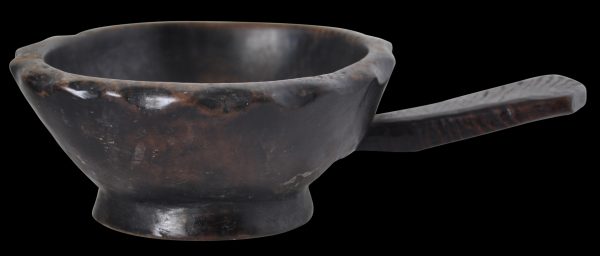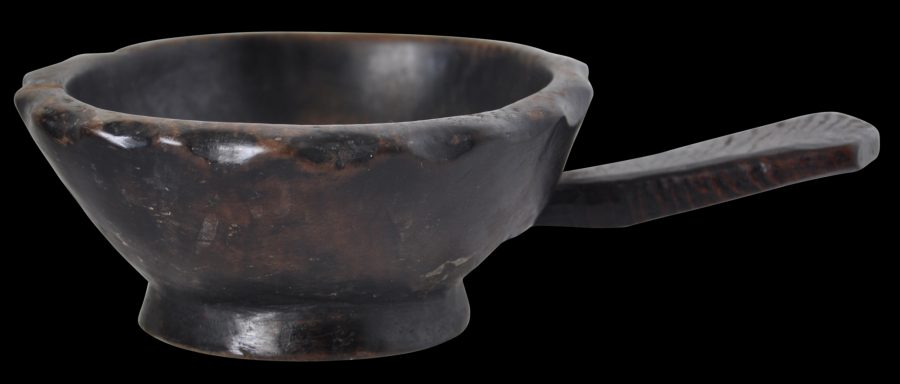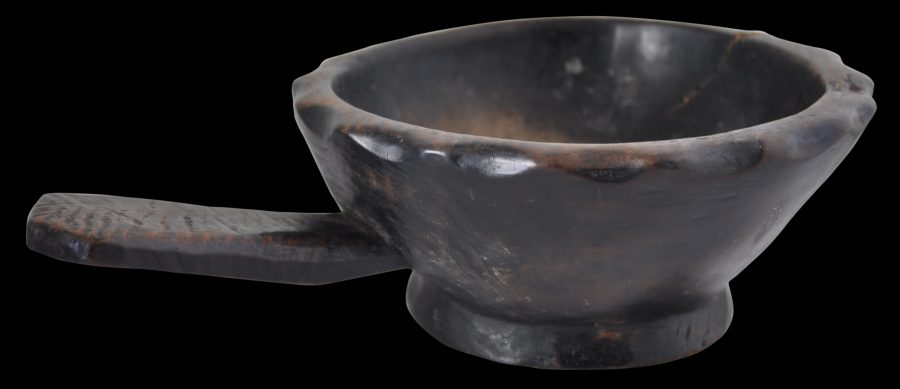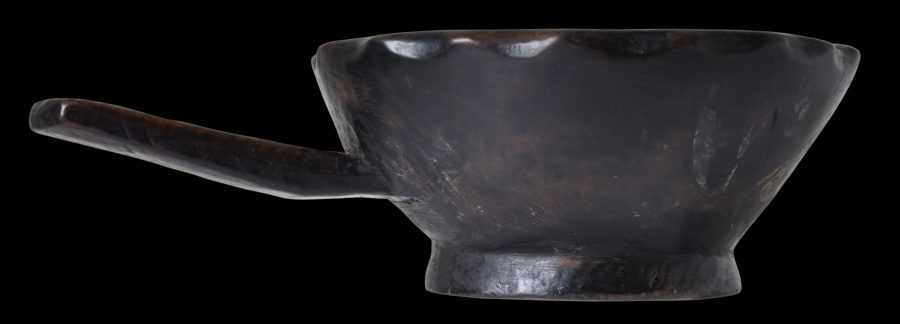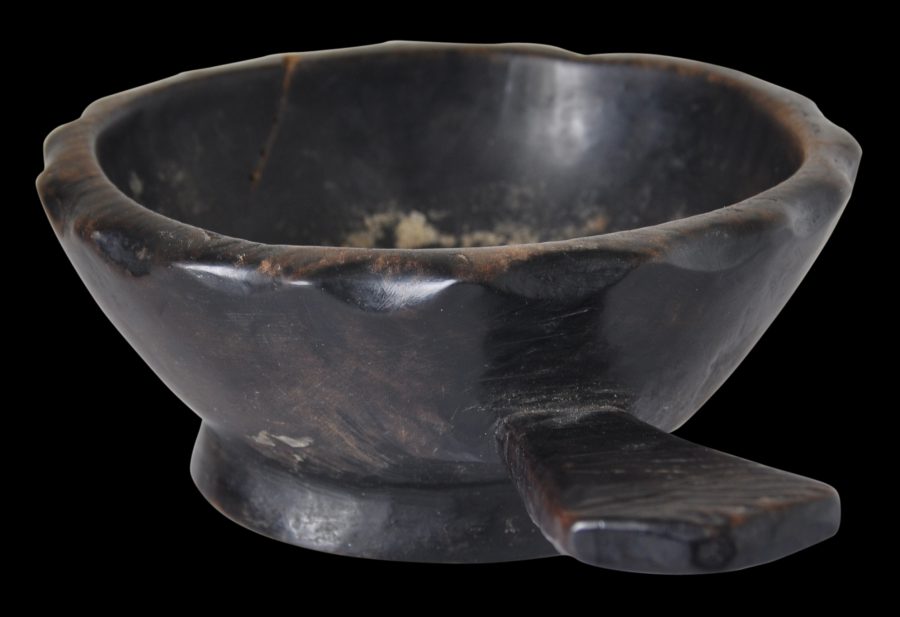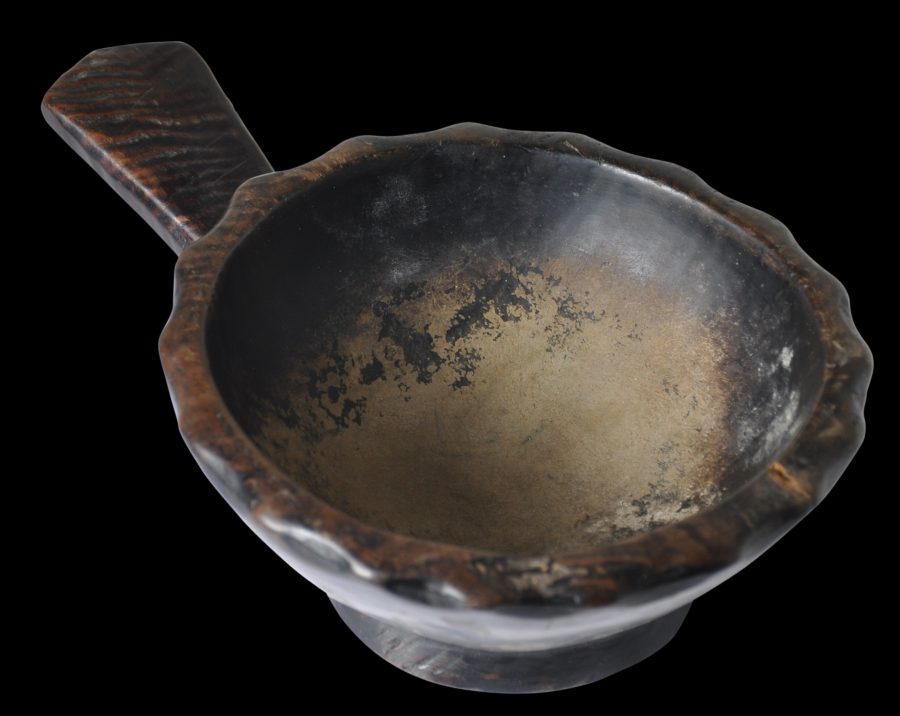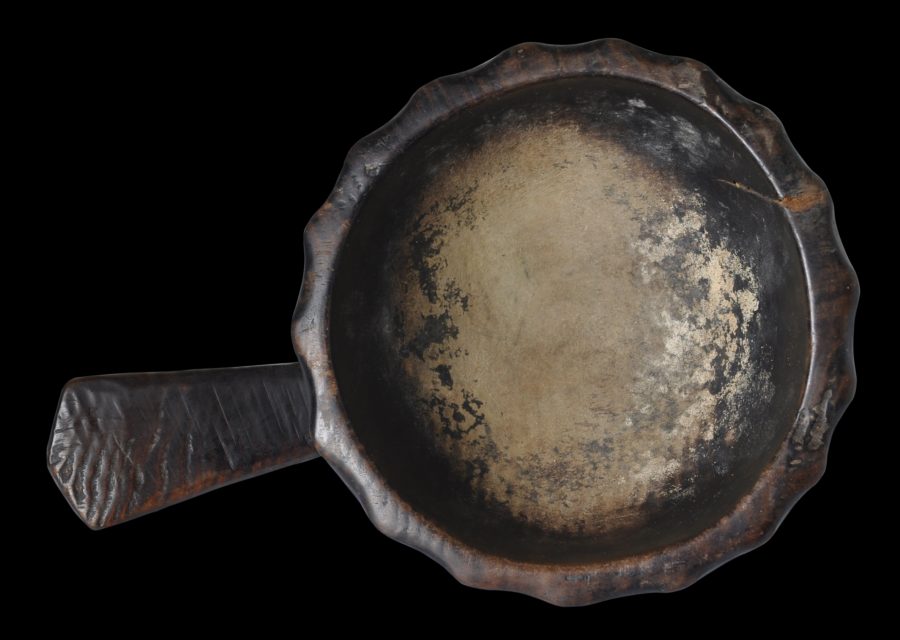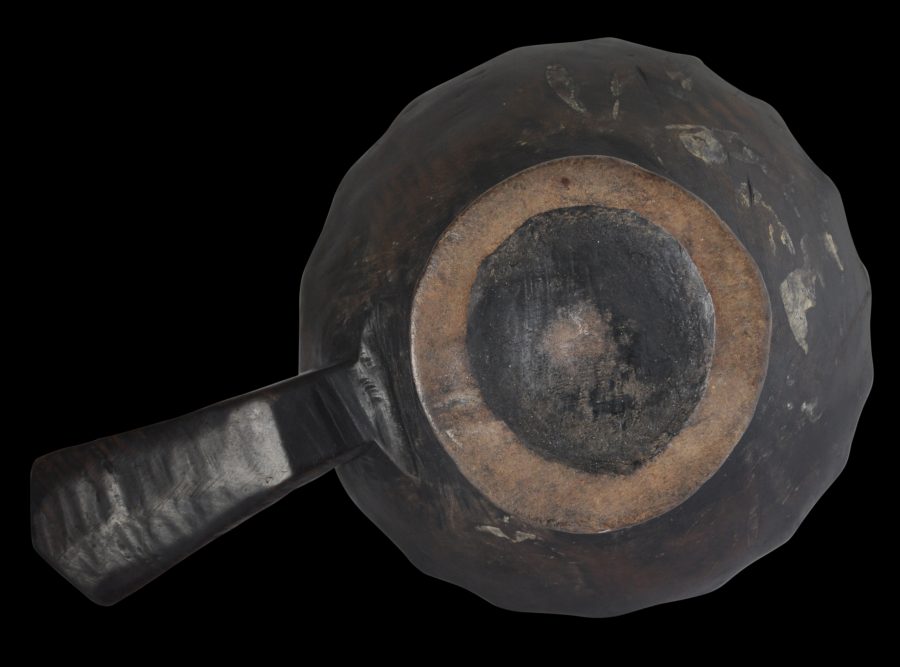Enquiry about object: 3908
Ifugao Carved Wooden Ritual Bowl with Handle (Duyu)
Ifugao People, Northern Luzon, Philippines 18th-19th century
length: 20.4cm, width: 13.5cm, height: 6.3cm
Provenance
private European collection.
This bowl, carved from a single piece of wood, was used to serve food and wine. It has a dark, rich, lustrous patina and a smoothness allowing for an attribution to the 18th or 19th centuries. The depth of the patina has given the outside of the bowl a plastic-like quality. Such a patina is possible from decades of use and smoothness from handling, but also from being rubbed with animal fats after each meal to help protect the vessel, which in combination with soot from the hearth gives such bowls their characteristic dark colour. The interior of the bowl does not have the same dark patina, which is also consistent with the bowl having been used – it is where food has settled, liquid has been absorbed into the wood, and utensils have scraped along the bottom.
The example has been carved with a ring foot, a handle, and a thick rim with notched or crenulated indentations, which possibly aid with drinking from the bowl, or are a motif preferred by the Ifugao, as witnessed by their jewellery items carved from shells which have a similar crenulated edging. Moltzau Anderson (2010, p. 171) suggests that such bowls were communally used and that each individual had their own slot.
Related examples with a similar lustrous patina which were included in the Musee du Quai Branly ‘Philippines’ exhibition of 2013 are illustrated in Afableet al (2013, p. 178-179).
The Ifugao people inhabit the mountainous provinces of northern Luzon island in the Philippines. The religious beliefs of the Ifugao are a complex structure of ancestor worship, animism and magical power. Numerous spiritual entities that represent natural elements, forces and phenomena, and ancestral and metaphysical beings are acknowledged, worshipped, appeased and appealed to. Generally the gods are seen as generous and benign beings who enjoy feasting, drinking wine and chewing betel nut, just as the tribes people themselves do. And so there is a blending of food and beverage serving vessels between the utilitarian and the ritual.
The bowl is free of chips and repairs. There is a shrinkage-related crack to one side but this is closed, stable and shows no movement.
References
Afable, P., et al, Philippines: an Archipelago of Exchange, ACTES SUD/ Musee du Quai Branly, 2013.
Casal, G. et al, The People and Art of the Philippines, UCLA Museum of Cultural History, 1981.
Moltzau Anderson, E., In the Shape of Tradition: Indigenous Art of the Northern Philippines, C. Zwartenkot Art Books, 2010.


